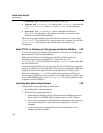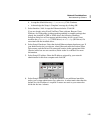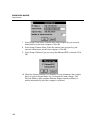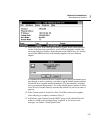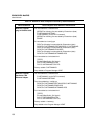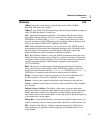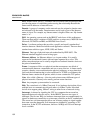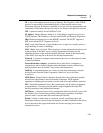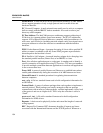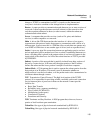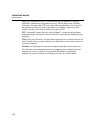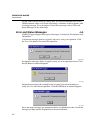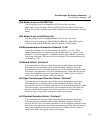
2640A/2645A NetDAQ
Users Manual
I-32
DNS Domain Name Service. A database and associated software packages that
provides the means of establishing and accessing the relationship between the
names and IP addresses of network hosts.
Domain A group of computers on the network may be assigned a domain name
and referred to by that name. Domain names can be used as part of the Internet
name of a host. For example, my Internet name is dag@tc.fluke.com. My domain
name is “tc”.
DOS An operating system used on the IBM PC and clones of this architecture.
There are three major variations of DOS (and lots or minor ones): MS/DOS from
Microsoft, PC/DOS from IBM, and DR/DOS from Novell.
Driver A software package that provides a specific and usually standardized
interface between a hardware interface and application software. There are three
standard network driver types; NDIS, ODI, and Packet.
Ethernet One type of physical network standardized by IEEE-802.3. The
Ethernet standard supports several wiring types.
Ethernet Address An Ethernet address is a six-part number. It is usually
expressed in hexadecimal format, with each part separated by a colon. This
address must be unique and is usually assigned to a hardware interface device at
the point of manufacture.
Frame A sequence of bits on a physical net that encompasses one block of
communication between a transmitter and one or more receiver. A frame usually
contains a header, source and destination physical addresses, an error detection
field, and the information that is to be transferred. In TCP/IP over Ethernet, the
Ethernet frame contains the IP packet, which, in turn contains the TCP packet.
Gate Also called a Gateway. A device used to interconnect different types of
physical networks. Gateways also usually perform router functions.
Host Any computer system attached to a network.
Hub The central unit of a 10BaseT network. It is a hardware device that allows
multiple hosts to communicate with each other via 10BaseT cable. Most hub
devices also support gating 10BaseT wiring to other forms of network wiring.
Interrupt A scheme for signaling the CPU in a computer that an event has
happened that needs software service. In the IBM PC there are two types of
interrupts. The first are IRQs (or hardware interrupts) that are communicated via
signals on hardware connections to an interrupt controller on the PC motherboard.
The second are soft interrupts that allow one software package to signal another
that some event has happened. Soft interrupts are initiated by executing a CPU
instruction. In the PC/AT architecture, there are 16 IRQs and 256 soft interrupt
levels available.



